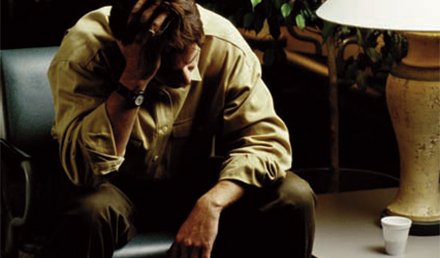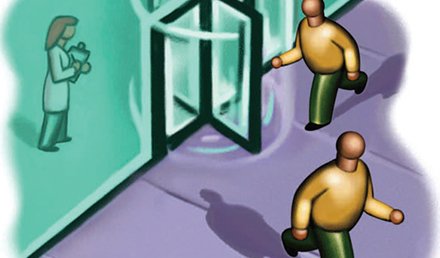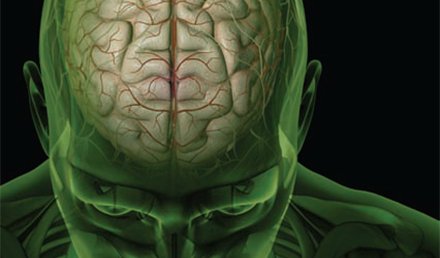Duration of IV Antibiotic Treatment for Children with Pyelonephritis Key point: Rates of renal scarring were similar in children who received long- or short-course IV antibiotics. Citation: Bouissou F, Munzer C, Decramer S, et al. Prospec- tive, randomized trial comparing short and long intravenous antibiotic treatment of acute pyelonephritis in children: Dimercaptosuccinic acid scintigraphic evaluation at 9 months. Pediatrics. 2008;121:e553-e560. Whether the mode and duration of antibiotic treatment prevent development of renal scars in children …
Read MoreClinical Challenge: May, 2008
This male patient presents to urgent care after, he claims, falling from a ladder. He refuses to give further details, except to say that the distance he fell was “not high.” View the x-ray taken (Figure 1) and consider what your diagnosis and next steps would be. Resolution of the case is described on the next page.
Read More
Prescription Drug Abuse and the Drug-Seeking Patient
Urgent message: The urgent care clinic is a prime target for prescription drug abusers seeking possibly inappropriate prescriptions. Clinicians must be vigilant to screen, intervene, and refer such patients. Marcelina Behnam, MD and Mark Rogers, MD Over the past several years, prescription drug abuse has become a problem of epidemic proportions for urgent care centers and emergency departments around the country. There has been an increase both in visits related to the acquisition of these …
Read MoreRekindling the Doctor-Patient Relationship
Lee A Resnick, MD, FAAFP The joy of practice is two-fold: Intellectual and Relational. The intellectual side of us thrives on the challenge of complex medical decision making and computational fact-finding. Understanding and applying pathophysiology is what we trained for, and what most of us consider to be a joyful brain exercise. However, since we do not practice medicine in a vacuum, the relational side of patient care is equally important to job satisfaction. It …
Read MoreAbstracts in Urgent Care: May 2008

The Case of a 71-Year-Old Man with Back Pain
Though it is easy to predict the usual etiology of common complaints, we need to be able to exclude life-threatening causes of symptoms. In law, we are innocent until proven guilty. In medicine, we are required to prove certain diseases are not occurring; we are, in a sense, guilty until proven innocent: A 50-year-old man with chest pain and diaphoresis has an MI until proven otherwise. A 22-year-old woman with lower abdominal pain has an …
Read MoreClinical Challenge: April, 2008
The patient is an 82-year-old man who presented after having fallen backwards and landing on his back. He did not lose consciousness; nor did he vomit. The patient entered the clinic using a walk- er, which he reported using on a regular basis. Examination revealed an abrasion over his forehead and over the anterior right tibia. The neurological exam showed no acute changes. The patient was specifically tender over the shoulder, but there was no …
Read MoreAbstracts in Urgent Care: April, 2008
Non-Steroidal Anti-Inflammatory Drugs for Low-Back Pain (Review) Key point: NSAIDS are more effective than placebo, are all similar in efficacy, and do have significant side effects. COX- 2 seems to have fewer side effects; however, the recent data on CV side effects is a concern. Citation: Roelofs PDDM, Deyo RA, Koes BW, et al. Cochrane Database of Systematic Reviews 2008, Issue 1. Art. No.: CD000396. DOI: 10.1002/14651858.CD000396.pub3. The authors searched the MEDLINE and EMBASE databases …
Read More
Minor Traumatic Brain Injury: Applying the Evidence to Urgent Care
Urgent message: While few data specific to the urgent care setting exist, applying the medical evidence gleaned from other acute care settings can enable the clinician to effect positive outcomes in patients presenting with symptoms indicative of minor TBI. Joseph Toscano, MD Head trauma is among the most important problems evaluated in acute-care medicine. Estimates from the Centers for Disease Control and Prevention indicate that each year in the Unites States, approximately 1.4 million individuals …
Read MoreNotes From the Field
Lee A. Resnick, MD, FAAFP I write to you from the beautiful landscapes of New Zealand, where I just participated in the first-ever international conference for urgent care. Representatives from all over the world joined to share ideas and experiences of their journeys into the development of urgent care as a discipline and an industry. This international dialogue broadens our understanding of the clinical and market forces driving this global phenomenon, and strengthens our individual …
Read More